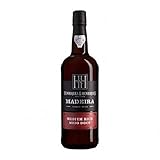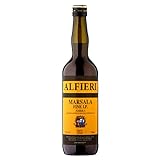What’s in this Guide?
- Introduction to Fortified Wines
- Best Selling Fortified Wine
- Definition of Fortified Wine
- History and Origins of Fortified Wine
- Types of Fortified Wine
- How is Fortified Wine Made?
- Popular Brands of Fortified Wine
- Serving and Pairing Suggestions
- Health Benefits and Risks of Drinking Fortified Wine
- Alternative Uses for Fortified Wine in Cooking and Cocktails
- Our Key Takeaways for Fortified Wines
- Best Selling Fortified Wine

Introduction to Fortified Wines
Are you ready to embark on a delicious journey into the world of fortified wines? Whether you’re a seasoned connoisseur or just beginning your exploration, this complete guide has got you covered.
From the rich history and origins to the various types, production methods, serving suggestions, and even alternative uses in cooking and cocktails – we’ve left no stone unturned. So sit back, pour yourself a glass (or two), and let’s dive into everything you need to know about fortified wine. It’s time to discover new flavours and elevate your sipping experience!
Best Selling Fortified Wine
| # | Preview | Product | Price | |
|---|---|---|---|---|
| 1 |

|
Harveys Bristol Cream Solera Sherry, 1L |
£14.75 |
Buy on Amazon |
| 2 |

|
Morrisons Cream Sherry, 1L |
£10.50 |
Buy on Amazon |
| 3 |

|
Croft Original Sherry Wine , 1l |
£14.50 |
Buy on Amazon |
| 4 |

|
Croft Original Sherry White Pale Cream, 750ml |
£11.50 |
Buy on Amazon |
| 5 |

|
Barbadillo Amontillado Medium Dry Sherry Wine, 75 cl |
£11.99 |
Buy on Amazon |
| 6 |

|
Harveys The Bristol Cream Solera Sherry, 75cl |
£11.50 |
Buy on Amazon |
Definition of Fortified Wine
Fortified wine, with its name exuding sophistication and intrigue, may lead one to wonder about its composition. Essentially, it is wine that has been fortified by the addition of distilled spirits, often brandy. This not only boosts the alcohol level but also imbues the ultimate outcome with distinct flavours and traits.
Unlike your typical table wines, which usually contain around 12-15% alcohol by volume (ABV), fortified wines can range anywhere from 17% to a whopping 22% ABV! This higher alcohol content gives them a distinct warmth and richness that sets them apart.
One key aspect of fortified wines is their ability to age gracefully over time. Thanks to their higher alcohol levels, these wines have incredible staying power in the bottle, allowing them to develop complex aromas and flavours as they mature.
There are several different styles of fortified wine available, each with its own unique profile and production methods. Some popular types include Port, Sherry, Madeira, Marsala, and Vermouth – all boasting their own rich histories and cultural significance.
So why should you give fortified wine a try? Well for one thing, it’s like sipping on history in a glass! These timeless libations have been enjoyed for centuries by discerning palates around the world. Plus, they offer an incredible array of flavours – from sweet and luscious to dry and nutty – ensuring there’s something for everyone’s taste preferences.
But don’t just take my word for it – grab yourself a bottle or two of fortified wine today and experience the magic first-hand. Expand your palate, impress your guests with sophisticated pairings or elevate your culinary creations with this versatile elixir. It’s time to raise a glass in celebration of fortified wines.
History and Origins of Fortified Wine
The history and origins of fortified wine can be traced back centuries ago. It is believed that the practice of fortifying wine began in ancient Greece and Rome, where winemakers would add spirits such as brandy to their wines to preserve them during long journeys.
During the 15th and 16th centuries, European explorers ventured out into new lands, including Africa and the Americas. They discovered that adding alcohol to wine not only preserved it but also improved its flavour. This discovery led to the rise in popularity of fortified wines among sailors and merchants who needed a beverage that could withstand long voyages.
In the 17th century, Portugal became known for producing one of the most famous fortified wines – Port. The British were particularly fond of this rich and sweet wine, leading to a strong trade relationship between Portugal and England.
Today, fortified wines continue to be enjoyed around the world for their distinct flavours and versatility. Whether sipped on their own or used as an ingredient in cocktails or cooking recipes, these wines offer a taste experience unlike any other.
So next time you’re looking for something special to sip on or want to experiment with new flavours in your culinary creations, consider trying some fortified wine! With its fascinating history and diverse range of options available, there’s always something exciting waiting for you in every glass.
Types of Fortified Wine
There are several different types of fortified wine, each with its own unique characteristics and flavours. One popular type is Port, which originates from Portugal. It is typically a sweet red wine that has been fortified with brandy to increase its alcohol content.
| # | Preview | Product | Price | |
|---|---|---|---|---|
| 1 |

|
Cockburn's Special Reserve Port Wine, 75cl |
£12.50 |
Buy on Amazon |
| 2 |

|
Taylors Late Bottled Vintage Port | 75 cl | £18.98 | Buy on Amazon |
Another well-known fortified wine is Sherry, which comes from Spain. Sherry can be either dry or sweet, and it goes through a special aging process called the solera system. This method involves blending wines from different years to create a consistent flavour profile.
| # | Preview | Product | Price | |
|---|---|---|---|---|
| 1 |

|
Harveys Bristol Cream Solera Sherry, 1L |
£14.75 |
Buy on Amazon |
| 2 |

|
Morrisons Cream Sherry, 1L |
£10.50 |
Buy on Amazon |
| # | Preview | Product | Price | |
|---|---|---|---|---|
| 1 |

|
Curatolo Arini Fine Non Vintage Marsala Wine, 75 cl |
£18.38 |
Buy on Amazon |
| 2 |

|
Blandy’s Duke of Clarence Rich Madeira wine, 75cl |
£11.00 |
Buy on Amazon |
| # | Preview | Product | Price | |
|---|---|---|---|---|
| 1 |

|
Blandy’s Duke of Clarence Rich Madeira wine, 75cl |
£11.00 |
Buy on Amazon |
| 2 |

|
Blandy’s - Duke of Cumberland Medium Sweet Madeira wine – 75cl |
£14.99 |
Buy on Amazon |
| # | Preview | Product | Price | |
|---|---|---|---|---|
| 1 |

|
Dubonnet Aperitif Wine, 75 cl (Packaging may vary) |
£10.99 |
Buy on Amazon |
| 2 |

|
Regal Rogue Bold Red Vermouth, 50 cl - Hand Crafted Dry Savoury Aromatic Fortified Wine from South... |
£17.95 |
Buy on Amazon |
How is Fortified Wine Made?
Fortified wine is a fascinating beverage that boasts a unique production process. So, how exactly is fortified wine made? Let’s dive into the details.
It all starts with a base wine, usually made from grapes grown specifically for fortified wines. The winemaker carefully selects the grapes and presses them to extract the juice. Fermentation then takes place, converting sugar into alcohol.
Once the desired level of alcohol has been achieved (usually around 8-10%), a distilled spirit such as brandy is added to halt fermentation. This addition not only stops further fermentation but also boosts the alcohol content significantly.
The fortification process gives fortified wines their characteristic higher alcohol levels compared to regular table wines. It also adds complexity and depth of flavour, making them truly unique beverages.
After fortification, the wine may be aged in oak barrels for several years or even decades. This aging imparts additional flavours and aromas while allowing the different components to harmonise beautifully.
The result is a rich and flavourful drink with notes of dried fruits, spices, and sometimes even hints of nuttiness or caramel.
Now that you know how fortified wine is made, it’s time to explore some popular brands and discover exciting serving suggestions! Stay tuned for more insights on this delightful drink.
Popular Brands of Fortified Wine
When it comes to fortified wines, there are several popular brands that have made a name for themselves in the industry. From traditional labels with centuries-old heritage to newer players pushing boundaries with innovative techniques, there is something for every palate.
One of the most well-known brands in the fortified wine world is Taylor’s Port. With a history dating back to 1692, this Portuguese winery has been producing exceptional port wines for generations. Their range includes everything from vintage ports to tawny ports, catering to different preferences and occasions.
| # | Preview | Product | Price | |
|---|---|---|---|---|
| 1 |

|
Taylors Late Bottled Vintage Port | 75 cl | £18.98 | Buy on Amazon |
| 2 |

|
Taylors Port 20 Year Old Tawny Port | 75 cl |
£32.59 |
Buy on Amazon |
Another renowned fortified wine brand is Gonzalez Byass. Based in Spain, they are famous for their Sherries, particularly their Tio Pepe Fino Sherry. Made using the traditional solera system and aged under flor (a layer of yeast), this dry and crisp Sherry is a favourite among enthusiasts.
| # | Preview | Product | Price | |
|---|---|---|---|---|
| 1 |

|
Tio Pepe Fino Sherry - Vegan Spanish Fortified Wine, 75 cl Bottle, 15 Percent ABV - Customer... |
£11.49 |
Buy on Amazon |
| 2 |

|
Barbadillo Manzanilla Dry Sherry Wine, 75 cl |
£10.00 |
Buy on Amazon |
For those who enjoy a sweeter fortified wine experience, Lustau is an excellent choice. This Spanish producer specialises in high-quality sherries and sweet wines like Pedro Ximenez and Moscatel. Known for their rich flavours and luscious textures, these wines are perfect as dessert pairings or standalone sippers.
| # | Preview | Product | Price | |
|---|---|---|---|---|
| 1 |

|
Lustau Los Arcos Dry Amontillado Sherry, 75 cl |
£16.99 |
Buy on Amazon |
| 2 |

|
Lustau Fino Del Puerto Solera Familiar, Bodegas NV, Dry Sherry - 75cl |
£18.80 |
Buy on Amazon |
Moving on to South Africa, Klein Constantia stands out as an exceptional producer of Vin de Constance – a legendary sweet wine that has captured hearts worldwide since the 18th century. Made from Muscat Blanc à Petits Grains grapes affected by noble rot (botrytis), this golden elixir offers complex aromas of honeyed apricots and floral nuances.
We cannot overlook Australia’s contribution to the world of fortified wine through iconic brands such as Penfolds and Seppeltsfield. Both have crafted remarkable examples of Australian Tawny Port-style wines that showcase intense fruitiness balanced by oak-aged richness.
| # | Preview | Product | Price | |
|---|---|---|---|---|
| 1 |

|
Penfolds Father Grand Tawny 10 Year Old, 75cl |
£30.95 |
Buy on Amazon |
| 2 |

|
Penfolds Grandfather 20 Year Old Rare Tawny in luxury presentation box 75cl 20% ABV |
£69.95 |
Buy on Amazon |
These are just a few examples showcasing the diverse range of popular fortified wine brands available. Each brand brings its unique style and character to the table, making it worth a try.
Serving and Pairing Suggestions
When it comes to enjoying fortified wine, knowing how to serve and pair it can elevate your experience. Here are some suggestions to help you make the most of this unique beverage.
Serving temperature is key. Most fortified wines are best enjoyed slightly chilled, around 10-14°C. This helps preserve their flavours and aromas without overpowering them.
For a classic pairing, try serving a rich tawny port with aged cheeses like Stilton or Gouda. The nutty and caramel notes in the wine complement the savoury flavours of these cheeses perfectly.
If you prefer something sweeter, consider pairing a luscious Pedro Ximenez sherry with dark chocolate desserts or blueberry tart. The sweetness of the wine pairs harmoniously with the richness of these treats.
For those who enjoy lighter styles of fortified wine like fino or manzanilla sherry, try serving them alongside salty snacks like olives or almonds. The crisp acidity and saline character of these sherries create a refreshing contrast with the saltiness.
Don’t be afraid to experiment! Fortified wines can also be used as an ingredient in cocktails or poured over vanilla ice cream for a decadent dessert treat.
Remember that taste is subjective, so feel free to explore different combinations until you find your perfect match. Whether sipping on its own or paired with food, fortified wines offer endless possibilities for enjoyment.
Best Selling Fortified Wine Hampers
| # | Preview | Product | Price | |
|---|---|---|---|---|
| 1 |

|
Alameda Olorose Fortified Wine 50cl |
£17.75 |
Buy on Amazon |
| 2 |

|
Thornton & France ‘The Celebration’ Red Wine Hamper With Nibbles | Luxury Food Hamper With... |
£39.95 |
Buy on Amazon |
Health Benefits and Risks of Drinking Fortified Wine
When it comes to enjoying a glass of fortified wine, there are both health benefits and risks to consider. On the positive side, moderate consumption of fortified wine has been associated with certain health benefits. For instance, the antioxidants found in red varieties like Port or Sherry have been linked to improved heart health and reduced risk of cardiovascular disease.
Additionally, fortified wines contain higher alcohol content than regular table wines, which can provide a relaxing effect when consumed in moderation. This can be particularly beneficial for individuals who experience stress or anxiety.
However, it’s important to note that excessive consumption of fortified wine can lead to negative health effects. The high alcohol content increases the risk of liver damage and addiction. It is crucial to enjoy these beverages responsibly and within recommended limits.
Furthermore, some individuals may need to exercise caution when consuming fortified wine due to its sugar content. Diabetics or those watching their sugar intake should consult with their healthcare provider before indulging in these sweet libations.
While there are potential health benefits associated with drinking fortified wine in moderation, it’s essential to be mindful of the risks involved as well. Enjoying a glass occasionally can be a delightful treat but always remember that responsible drinking is key for maintaining overall wellbeing.
Alternative Uses for Fortified Wine in Cooking and Cocktails
Fortified wine not only shines on its own, but it can also add depth and flavour to your cooking and cocktails. Its rich and complex nature lends itself well to a variety of culinary creations.
In the kitchen, fortified wine can be used as a marinade for meats or added to sauces and gravies. The sweetness of the wine balances out savoury flavours while adding a delightful complexity. Try using it in braised dishes like beef stew or even deglazing your pan after searing meat for an irresistible sauce.
When it comes to cocktails, fortified wines are a bartender’s secret weapon. From classic recipes like the Manhattan made with sweet vermouth, to modern twists such as sherry-infused martinis, these beverages offer endless possibilities. Adding just a splash of fortified wine can elevate a cocktail from ordinary to extraordinary.
For those with a sweet tooth, fortified wines are perfect for creating delicious desserts. Whether you’re reducing them into syrups for drizzling over ice cream or incorporating them into cakes and pastries, their unique flavours will leave your taste buds dancing with delight.
So next time you reach for that bottle of fortified wine, consider exploring its potential beyond sipping on its own. Get creative in the kitchen or behind the bar and discover the myriad ways this versatile beverage can enhance your culinary experiences.
Our Key Takeaways for Fortified Wines
To sum it all up, fortified wine is a fascinating and versatile drink that has been enjoyed for centuries. From its rich history to the diverse range of types available today, there is something for everyone to appreciate in this unique category of wine.
We explored the origins and production process of fortified wines, learning how winemakers add brandy or other spirits to increase the alcohol content and create a distinct flavour profile. We also delved into some popular brands that have become synonymous with quality fortified wines.
When it comes to serving and pairing suggestions, we discovered that fortified wines can be enjoyed on their own as an aperitif or dessert wine. They also pair well with various cheeses, chocolates, dried fruits, and nuts. The versatility extends beyond just drinking them; these wines can enhance your culinary creations or be used as key ingredients in cocktails.
In terms of health benefits and risks, moderate consumption of fortified wine may have positive effects on heart health due to its antioxidant properties. However, excessive intake can lead to negative consequences like liver damage or addiction. As always, moderation is key when indulging in any alcoholic beverage.
We encourage you to try different varieties of fortified wine and explore their flavours first-hand. Whether you’re new to this type of wine or already a fan looking for new experiences, there are plenty of options waiting for you. So why not raise a glass filled with velvety Port after dinner? Or savour a sip of rich Sherry while enjoying good company? With so much variety available from around the world right at your fingertips – give fortified wines a chance!
Best Selling Fortified Wine
| # | Preview | Product | Price | |
|---|---|---|---|---|
| 1 |

|
Harveys Bristol Cream Solera Sherry, 1L |
£14.75 |
Buy on Amazon |
| 2 |

|
Morrisons Cream Sherry, 1L |
£10.50 |
Buy on Amazon |
| 3 |

|
Croft Original Sherry Wine , 1l |
£14.50 |
Buy on Amazon |
| 4 |

|
Croft Original Sherry White Pale Cream, 750ml |
£11.50 |
Buy on Amazon |
| 5 |

|
Barbadillo Amontillado Medium Dry Sherry Wine, 75 cl |
£11.99 |
Buy on Amazon |
| 6 |

|
Harveys The Bristol Cream Solera Sherry, 75cl |
£11.50 |
Buy on Amazon |
As an Amazon Affiliate, we earn from any qualifying purchases / Images from Amazon Product Advertising API























